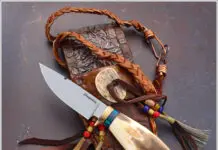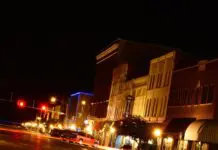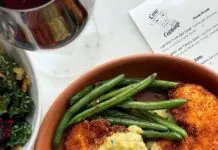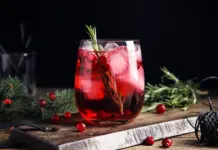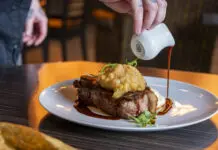
While living solely off the land may not be practical for most people, everyone can enjoy the bounty of Oklahoma on occasion through the practice of urban foraging. Wild mushrooms, herbs and fruits can all be found in nature, and, if harvested responsibly, can be a source of nutritious, unprocessed and chemical-free food.
“Foraging is what people have done for millennia to either supplement their food and medicine or to find all of their food and medicine,” says Ashley Clouse, owner of Restoration Farms in Peggs. “It used to be commonplace, but then with industrialization and urbanization, a lot of that information got lost. In 2020, there was a resurgence of the practice as people begin to see how fragile our food systems are.”
Spring and summer is the prime time for foraging flowers, berries, fruits and mushrooms. Fall brings persimmons, more mushrooms and nuts — but even as winter arrives, there’s plenty to be found.
“A few common things are rose hips, acorns, pecans, hackberries, pine, spruce, juniper berries/eastern red cedar berries and oyster mushrooms,” Clouse says. “Even though not everything is green and growing, you can practice identifying plants and trees in their winter form so you know where to watch for them when they pop back up in spring.”
Michael Ruzycki, owner of Ruzycki Farms in Jones along with his wife, Emily, is in his eighteenth growing season. In addition to running the farm, he also has an interest in plants harvested in the wild, and he makes use of their medicinal benefits.
“There are a lot of wild elderberries out there, which I also grow on my farm,” Ruzycki says. “You can find them in the ditches on the side of the road. Those have high antioxidants, and you can make a juice out of them. Goldenrod, the bright yellow flower you often see along roads, has respiratory benefits. Dandelion flowers, leaves and roots are all medicinal. ”
In Oklahoma, national parks like Chickasaw National Recreation Area, Ouachita National Forest and Black Kettle National Grassland are great places to look for wild plants. Bluff Creek Park, located in Oklahoma City, has hosted guided foraging walks and McGee Creek Reservoir, found in Atoka County, is a forested area where you may also find wild edibles.
When it comes to proper foraging, also known as wildcrafting, Clouse says there’s a code of ethics to be followed. Positive identification and safety are top of the list.
“We recommend using at least three ways to check your identification when you’re learning a plant,” Clouse says. “We want to make sure that the plant is in a safe location and that the plant is actually safe to work with.”
Ruzycki says it’s also important to wash what you find, especially from along a roadside.
“What you find in the wild might have what we call road dust, brake particles, metals and spray chemicals on it,” he says.
While foraging is allowed on most public lands in Oklahoma, it’s always good to double check that you have permission to harvest.
“It’s really important in a lot of Native traditions to include getting permission from the plants, and that’s a beautiful practice if it resonates with you,” says Clouse.
Sustainability is the fourth ethic followed by responsible foragers, Clouse adds, which involves taking no more than 10% of what is found in the wild.
Becoming hunter gatherers — even for an afternoon — can offer benefits beyond the food and medicine it provides.
“Whether it’s to connect more with the world around you or spend time outside together with the family,” Clouse says, “it should be fun. Start small so you won’t get overwhelmed. Focus on a few plants and really get to know them.”



